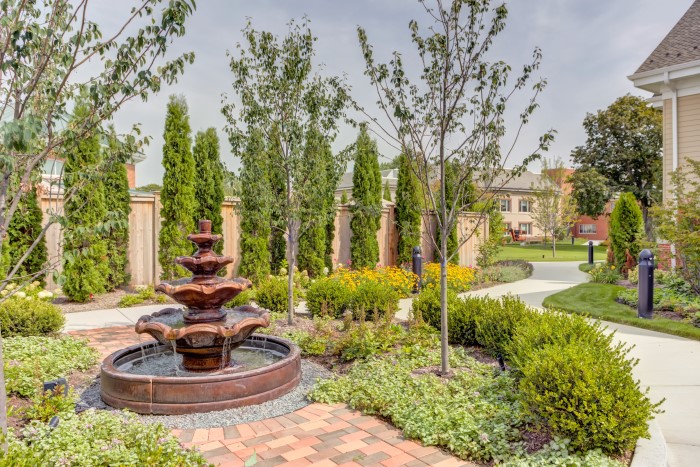 As you research continuing care retirement community (CCRC) options, you’ll likely find that some are for-profit and some are not-for-profit. What’s the difference between each of those communities, and which choice is right for you?
As you research continuing care retirement community (CCRC) options, you’ll likely find that some are for-profit and some are not-for-profit. What’s the difference between each of those communities, and which choice is right for you?
Learn more about for- and not-for-profit retirement communities in this article.
What Are For-Profit Retirement Communities?
According to myLifeSite, for-profit retirement communities are run like business entities and must report to a board and/or shareholders.
They generate funds from resident entrance fees and rental costs as well as outside investments. These types of communities have grown in popularity in the last few decades.
Although for-profit retirement communities have an obligation to generate revenue, that doesn’t necessarily mean they don’t invest time and money into better amenities and care for the residents.

What Are Not-For-Profit Retirement Communities?
Not-for-profit retirement communities are considered 501(c)(3) charitable organizations. Any earnings are reinvested into the organization to improve the standard of care and amenities for residents.
Not-for-profit retirement communities are often associated with a religious group that guides the culture and personality of the community. However, most communities accept all residents regardless of faith or religious beliefs.
These types of communities usually also have some type of ongoing mission. For example, at Presbyterian Homes, our mission is to create vibrant communities for older adults that inspire wellness, independence, joy, security and enrich the lives of those around them.
Many not-for-profit communities have been in operation for many years and offer transparency in how their financials are handled, giving you peace of mind that your money is going to an enduring organization.
Related: 25+ questions to help you evaluate a senior living community >>
Is a Not-For-Profit or For-Profit Community Right For Me?
There’s no right or wrong answer when it comes to choosing a retirement community. It all depends on your personal preference as well as what’s available in your area.
According to Brad Breeding in an article at myLifeSite, “I’m not aware of any concrete research showing that one type is appreciably better than another as it relates to financial viability, pricing, services, or otherwise. In fact...operating cost per resident [tends] to be very similar among for-profit and not-for-profit CCRCs.”
As you evaluate potential retirement communities, ask your contacts questions about the community’s operating structure and financial strength. Many not-for-profit communities also provide financial statements so you can see exactly how they’re performing.
In the end, choosing a retirement community is a personal decision, so make the one that’s best for you.

A Look at Presbyterian Homes, a Not-For-Profit Continuing Care Retirement Community
Presbyterian Homes comprises three continuing care retirement communities and one rental retirement community on Chicago’s North Shore. We’ve been a fixture of the area since 1904 and are proud to offer an upscale, faith-based retirement option.
The Geneva Foundation is our charitable arm that responds to our campus’ and residents’ needs and ensures the benevolence and growth of our communities.
“Rather than answering to stockholders, we direct our resources for the benefit of the residents we serve and the communities to which we belong. We are committed to developing self-sustaining communities that are creative, innovative, and responsive to the changing needs of residents,” said Todd Swortzel, president and chief executive officer of Presbyterian Homes.
Learn More About Our Retirement Communities
Presbyterian Homes’ continuing care retirement communities in Lake Forest, Arlington, and Evanston offer sophisticated retirement living options. Browse more information about each and download your complimentary guide to our communities here.






